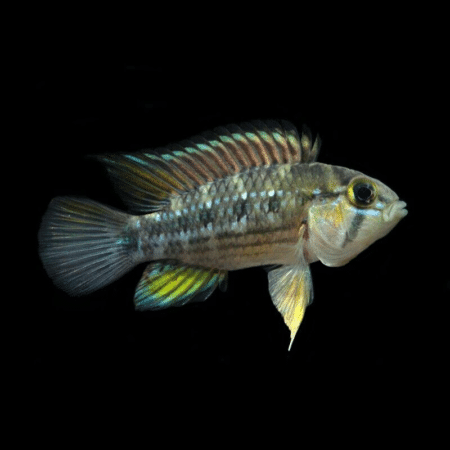-
×
-
×
-
×
Subtotal: £106.44




















Emily Carter (verified owner) –
I recently added the Apistogramma Cruzi to my 30-gallon freshwater aquarium, and I couldn’t be more thrilled! After a couple of weeks of observing their behavior, I can confidently say that these rare fish have become the stars of my tank. Their vibrant colors and unique patterns really stand out against the lush greenery I have planted. They are peaceful yet curious, making them perfect for a community setup. Compared to other dwarf cichlids I’ve kept, the Apistogramma Cruzi displays a wonderful personality and tends to interact more with me!
One thing to note is that they do prefer slightly acidic water, which I’ve managed to adjust easily with some driftwood and leaf litter. They’ve adjusted well to my water parameters, and I’ve noticed that they are quite lively and healthy. I genuinely believe that these fish thrive best in a well-planted aquarium with plenty of hiding spots. If you’re looking for a captivating freshwater fish that adds character and beauty to your aquarium, I highly recommend these little gems. You won’t be disappointed! My only minor concern was the shipping duration, which took a bit longer than expected, but they arrived in perfect condition. Overall, a fantastic choice for any passionate aquarist!
Emily Carter (verified owner) –
I recently added the Apistogramma Cruzi to my aquarium, and I couldn’t be happier! These little cichlids are stunning; the vibrant colors and unique patterns bring so much life to my tank. After two weeks of having them, they’ve settled in beautifully, showcasing their playful behavior. I ensure they get a good variety of high-quality fish food, and they seem to thrive on it.
I’ve kept various dwarf cichlids before, but the personality and charm of the Apistogramma Cruzi truly stand out. Unlike some other cichlids I’ve had, they are quite peaceful and get along well with my community tank, which includes tetras and guppies. I did notice they can be a bit shy at first, so providing hiding spots helps them feel secure.
If you’re an aquarium enthusiast looking for a captivating addition to your tank, I highly recommend the Apistogramma Cruzi. They are not only beautiful but also relatively easy to care for, making them perfect for both beginners and seasoned hobbyists. Just be sure to keep an eye on water parameters to ensure their happiness and health. Overall, these little guys have brought me so much joy!